One of Poland’s newest metropolises, Katowice was essentially left to the wolves when World War II broke out, as the Polish Army back-peddled east from Silesia to secure all-important Kraków in September 1939. With the Army out of sight and the city's fate seemingly consigned to the invading Nazis, the decision fell upon Katowice's citizens to either surrender or fight. Faced with impossible odds, an ill-equipped, inexperienced troop of upstart Polish boy and girl scouts actually chose the latter. A tragic coming-of-age story, and one of the war's most striking tales of hopeless valour, read on for the inspiring story of Katowice's defence at the outbreak of World War Two.
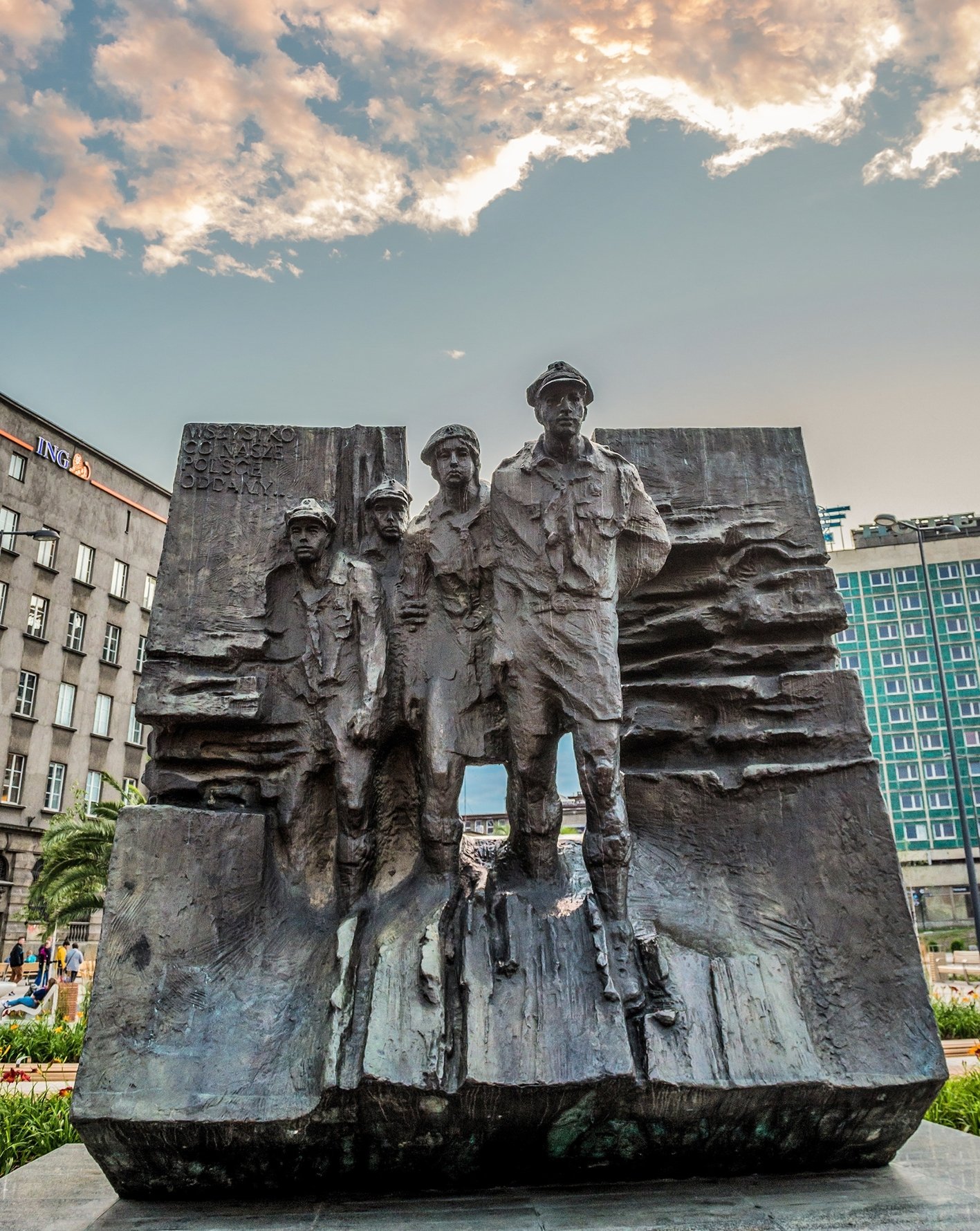
The Silesian Scouts Monument in Katowice; photo by Fotokon/AdobeStock
The Gleiwitz Incident: Hitler Sets the Stage for Invasion
With Katowice among the goods that Germany was forced to give up after WWI, it took Poland's grabby neighbours all of 18 years to recover and try to reclaim the region by force. While the shelling of Westerplatte on September 1st, 1939 is widely recognised as the first engagement of the Second World War, what few realise is that Hitler actually started that script here in Silesia a day earlier in what has become known to history as the 'Gleiwitz Incident.' Dressing his SS officers as Polish soldiers, Hitler staged a mock attack on Gliwice’s radio tower, which lay just inside the eastern border of Germany at the time, and used it to broadcast a short, anti-German screed in Polish. International journalists were quickly rushed to the scene where they were shown dead bodies strewn about in German uniforms, and instructed to disseminate outrage over the events to the outside world. By the time these victims were revealed to be prisoners from Dachau concentration camp, murdered by the Nazis and disfigured beyond identification, it hardly mattered in the scope of a war propagated upon Nazi atrocities.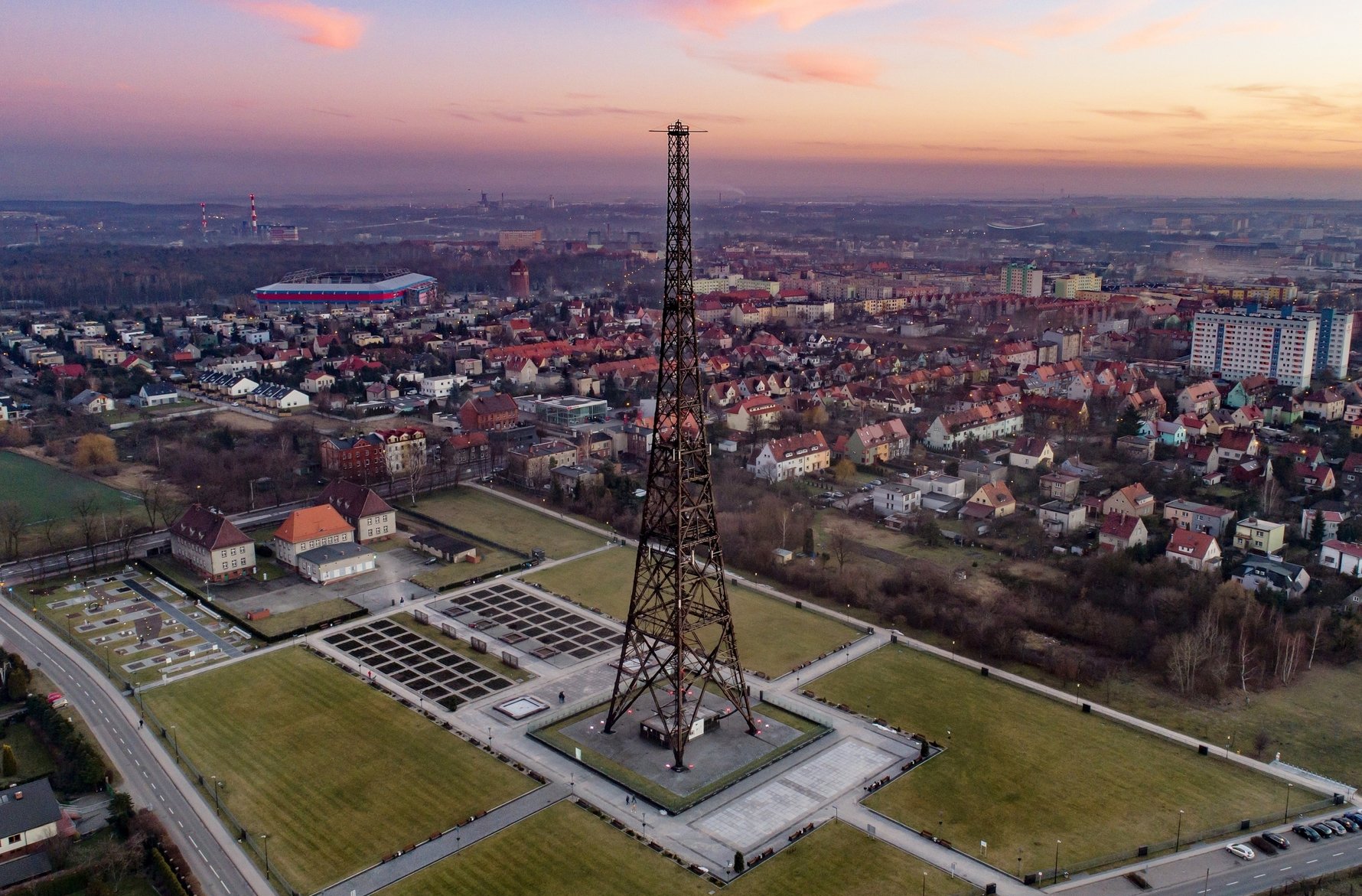
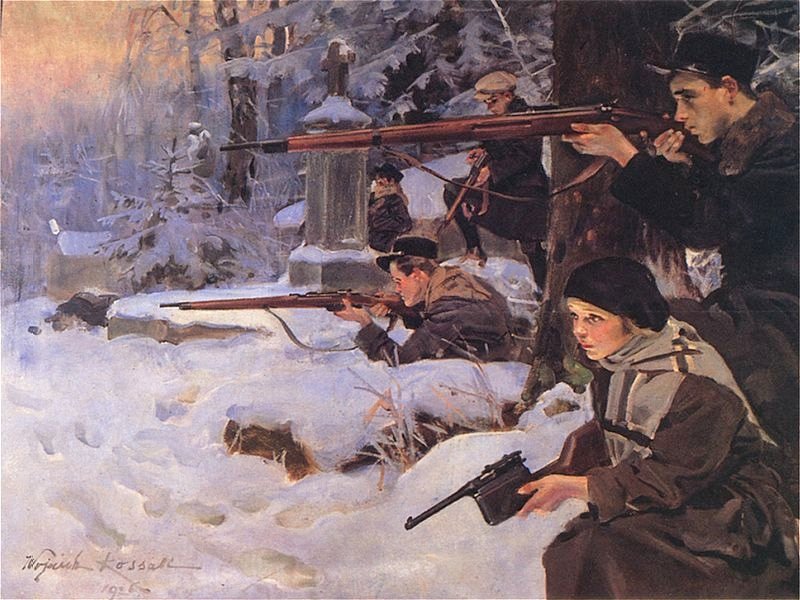
Polish Scouts Take Up Arms
One of the largest organisations in the country in 1939, the members of the Polish Scouting Association (Związek Harcerstwa Polskiego, aka ZHP) came valiantly to the defence of Poland nationwide when war broke out, with their members joining/forming local armed militias, and eventually aiding the Polish underground state as members of the Home Army (Armia Krajowa - the Polish underground resistance movement, officially formed in February 1942). Essentially now a paramilitary group, Poland's wartime scouts were dubbed the 'Gray Ranks' (Szare Szeregi) and participated in some of the fierced fighting against Nazi forces (particularly during the Warsaw Uprising) with even their youngest members carrying out clandestine acts of sabotage. In the process these young boys and girls became national heroes and the face of Nazi resistance in Silesia. As a consequence, however, they were also viewed as partisan fighters and criminals by the Nazis (and later also the Soviets), who did not treat them under the wartime conventions for 'prisoners of war' afforded official soldiers of the Polish Army, but rather showed no mercy towards the young insurgents.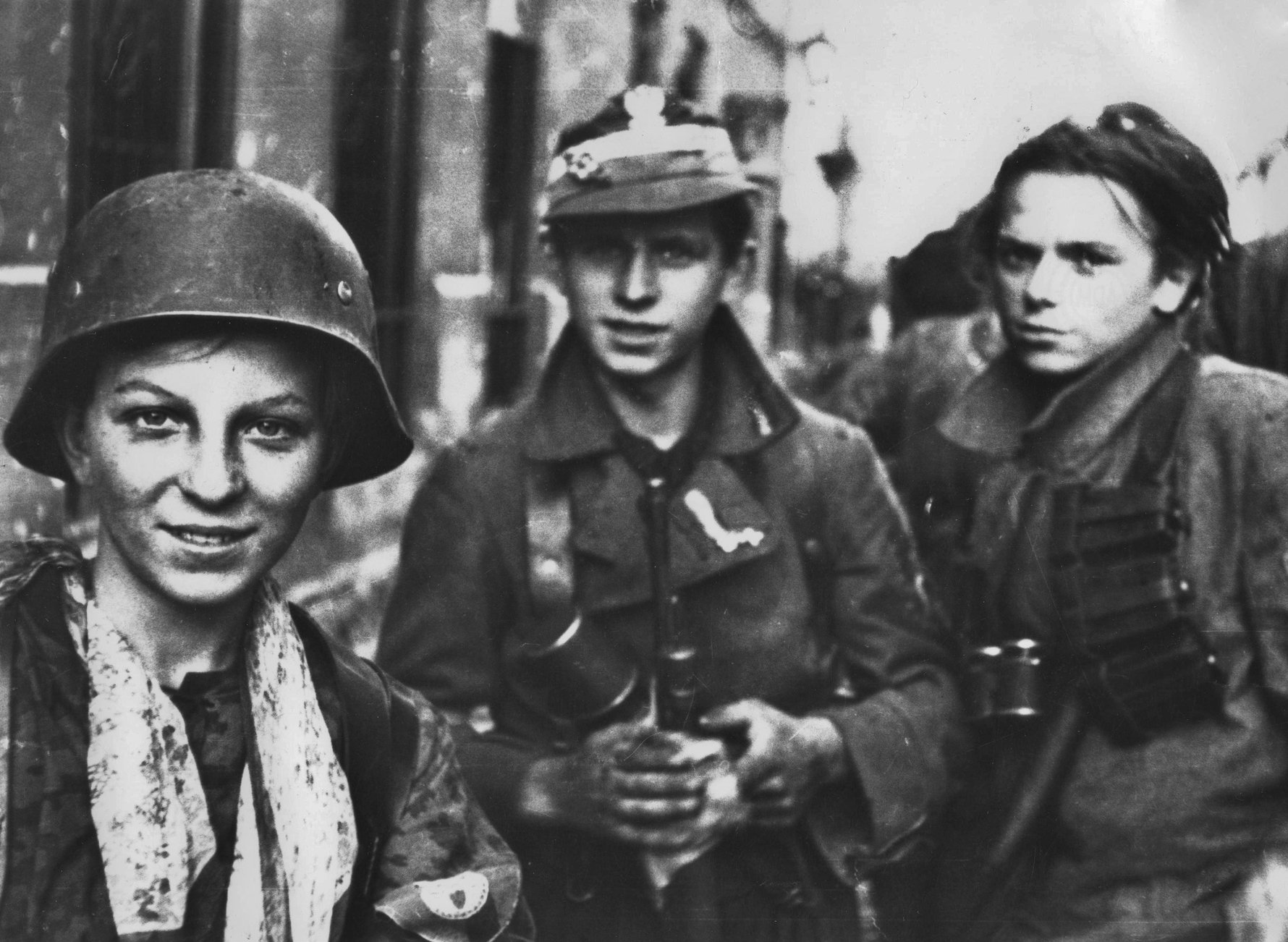
The Defence of Katowice, September 1939
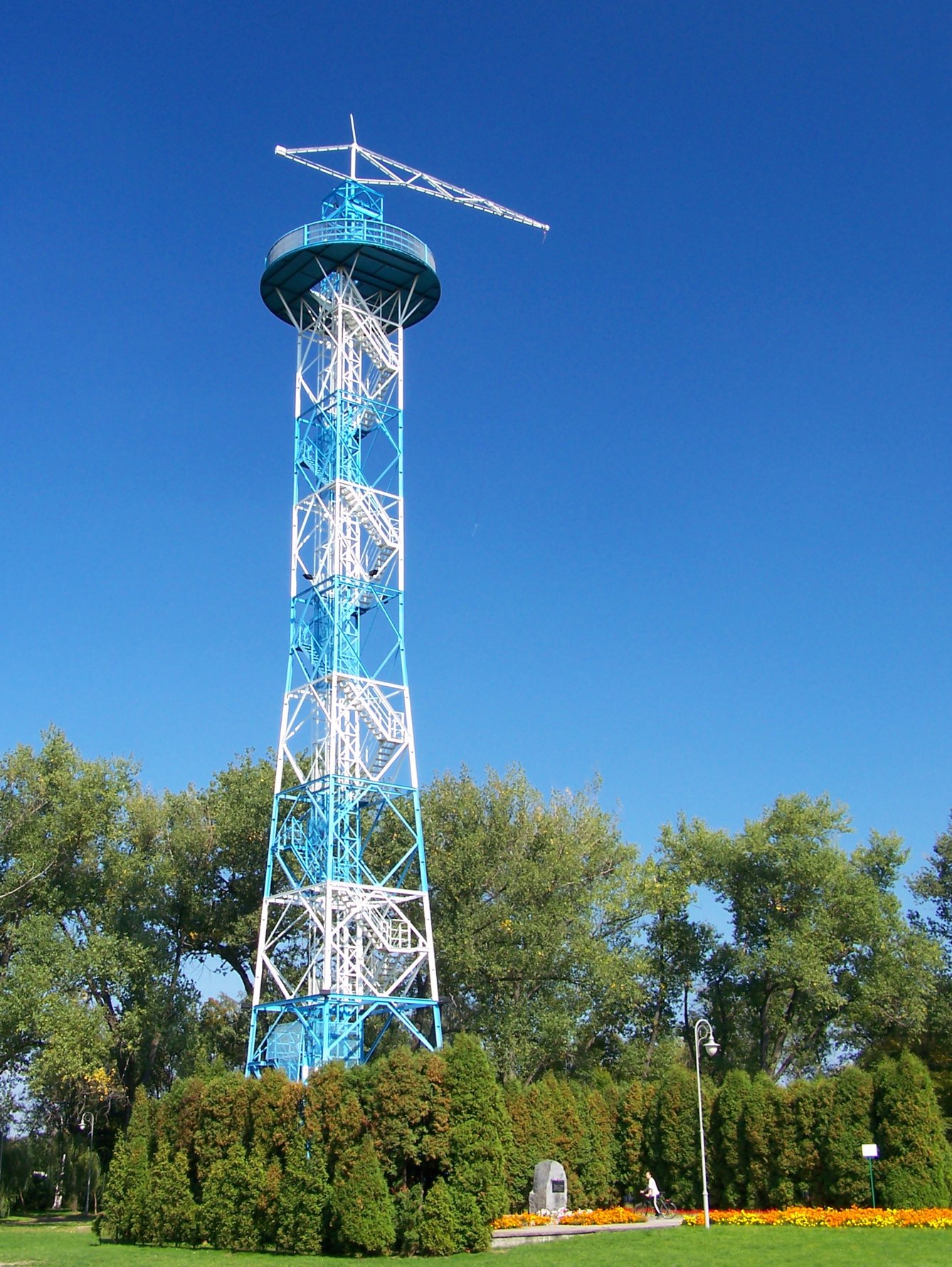
perfect for picking off Nazis from distance.
Upon the dawn of September 4th, the scene had shifted and a steady engagement of gunfire carried on around Plac Wolności, where the Silesian Insurgents' House on ul. Matejki had become the headquarters of Katowice's citizen defenders. German troops were also repelled from defensive positions on nearby ul. Gliwicka and ul. Mikołowska, as well as the city's iconic Cloud Scraper building (Drapacz Chmur) on ul. Żwirki i Wigury. Completed five years earlier in 1934, this 14-storey modernist marvel was the pride of Katowice, and as the tallest building in town at 60 metres high, assumed the role of sniper station for the Polish scouts whose sniping skills, particularly from that distance with the armaments at their disposal, probably left a lot to be desired.
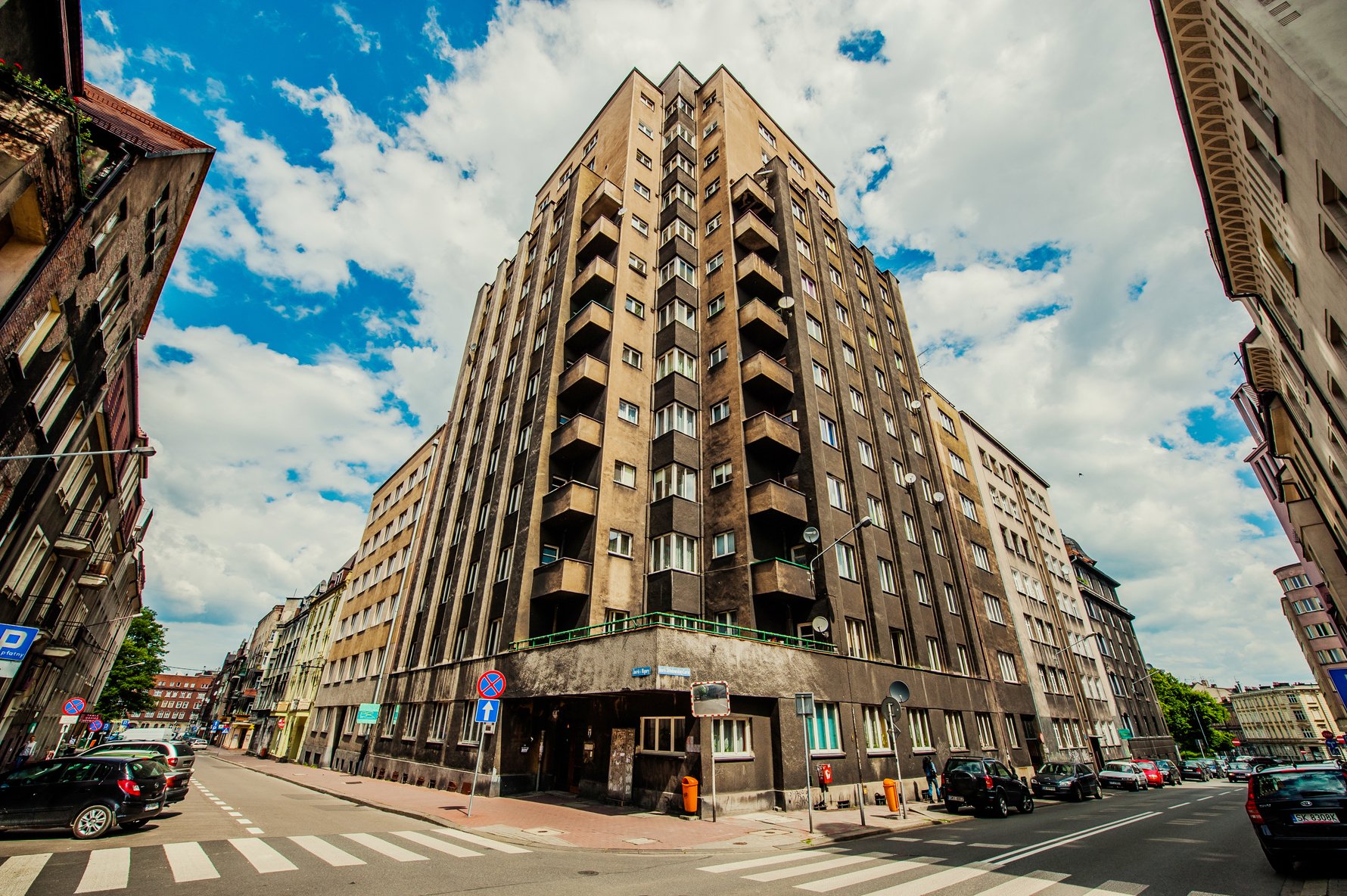
Nonetheless, a noble and tenacious effort it was, until, well...the tide soon turned on the ill-equipped, inexperienced and hopelessly outnumbered scouts. Camping outside the centre seemed to have only refreshed the enemy, redoubling their ranks and munitions, while the trembling scouts were exhausted, cold and hungry atop their makeshift skyline foxholes. First fell Plac Wolności and the Insurgents' House, followed by Cloud Scraper. Then fell the Rynek, where the Silesian Theatre had become a short-lived insurgent stronghold. In fact by noon on September 4th almost all of Katowice’s citizen resistance had been rounded up and executed en masse. Only the parachute tower in Kościuszko Park remained as the final outpost of Katowice’s independence. Exchanging fire with German troops into the evening of September 4th, the 50-metre-high tower was finally destroyed when the foul-playing Germans used an antitank gun to obliterate the whippersnappers once and for all. The scouts’ heroic defence of the position, suicidal as it was, grew so legendary it became the popular subject of poems and songs, and inspired a useless postwar reconstruction of the original tower. Today it is the only parachute tower remaining in Poland, and a granite obelisk alongside it commemorates the Katowice scouts whose brief but noble ascent into adulthood took place atop that fabled tower.
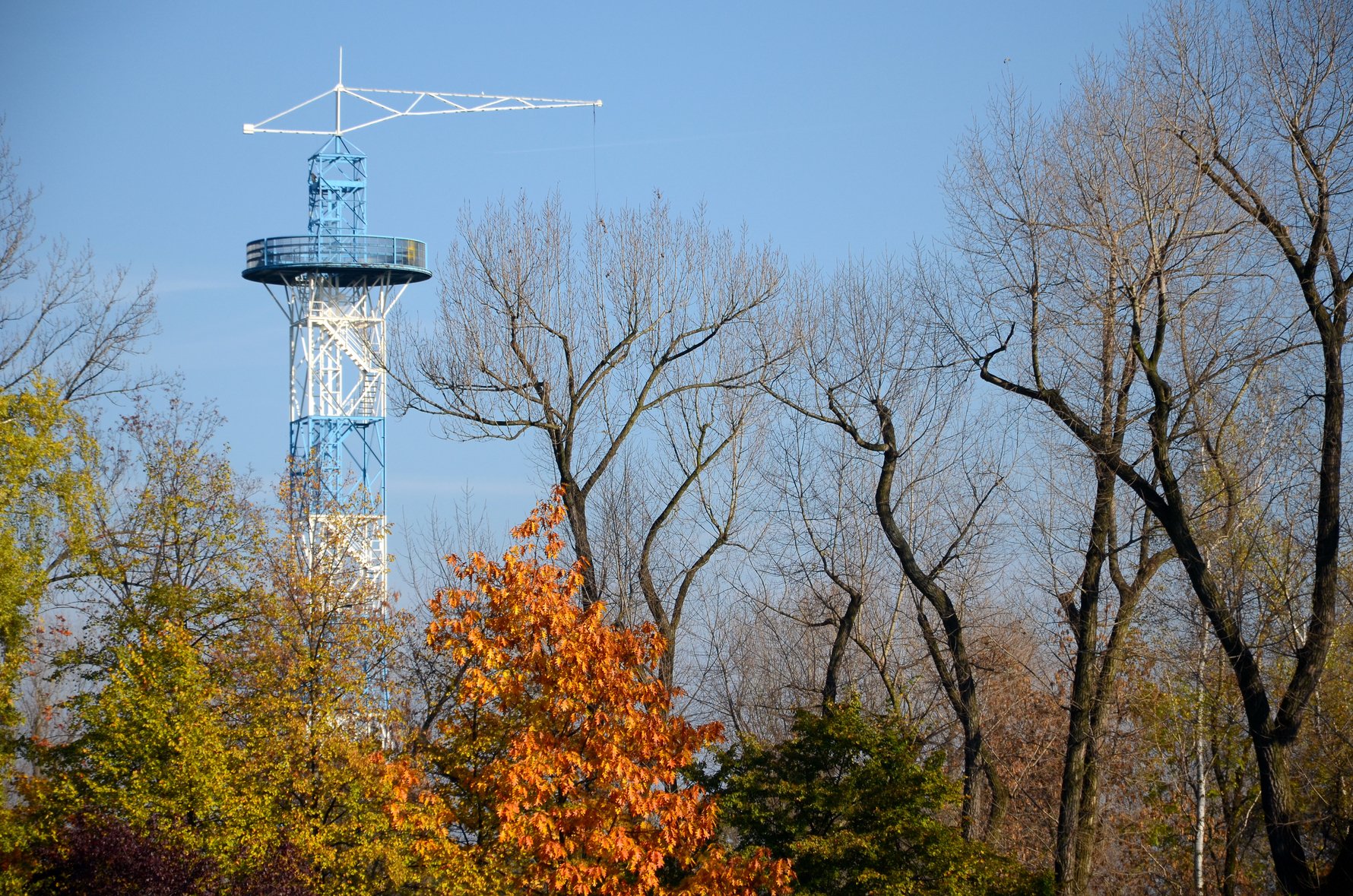
The 'Katowice Massacre'
Merely a small drop in the bucket of what would become an unbelievable and horrifying list of Nazi war crimes during World War II, the actions of the Wehrmacht in Katowice on September 3rd, 4th and the days following were among the Nazis' worst war crimes during its invasion of Poland in 1939. During and after the short siege of Katowice, the Germans rounded up and executed numerous civilians suspected or known to have played a direct role in the city's defence. Some estimates suggest that the number of citizens killed during the city's defence could be as high as 750, however the Polish Institute of National Remembrance (Instytut Pamięci Narodowej, IPN) itself has suggested the number to be closer to 150. That figure includes 80 insurgents, including many scouts aged 14 years old on average, who were executed by firing squad in a courtyard just off of today's ul. Korfantego. After the war this area near the Rynek was renamed 'Defenders of Katowice Square' (Plac Obronców Katowic) and today bears a large monument to the city's young volunteer soldiers. Designed by Michał Brachmański, the over-4-metre bronze sculpture depicts four scouts stepping out of a broken wall with the inscription, “All that is ours to give, we shall give to Poland.”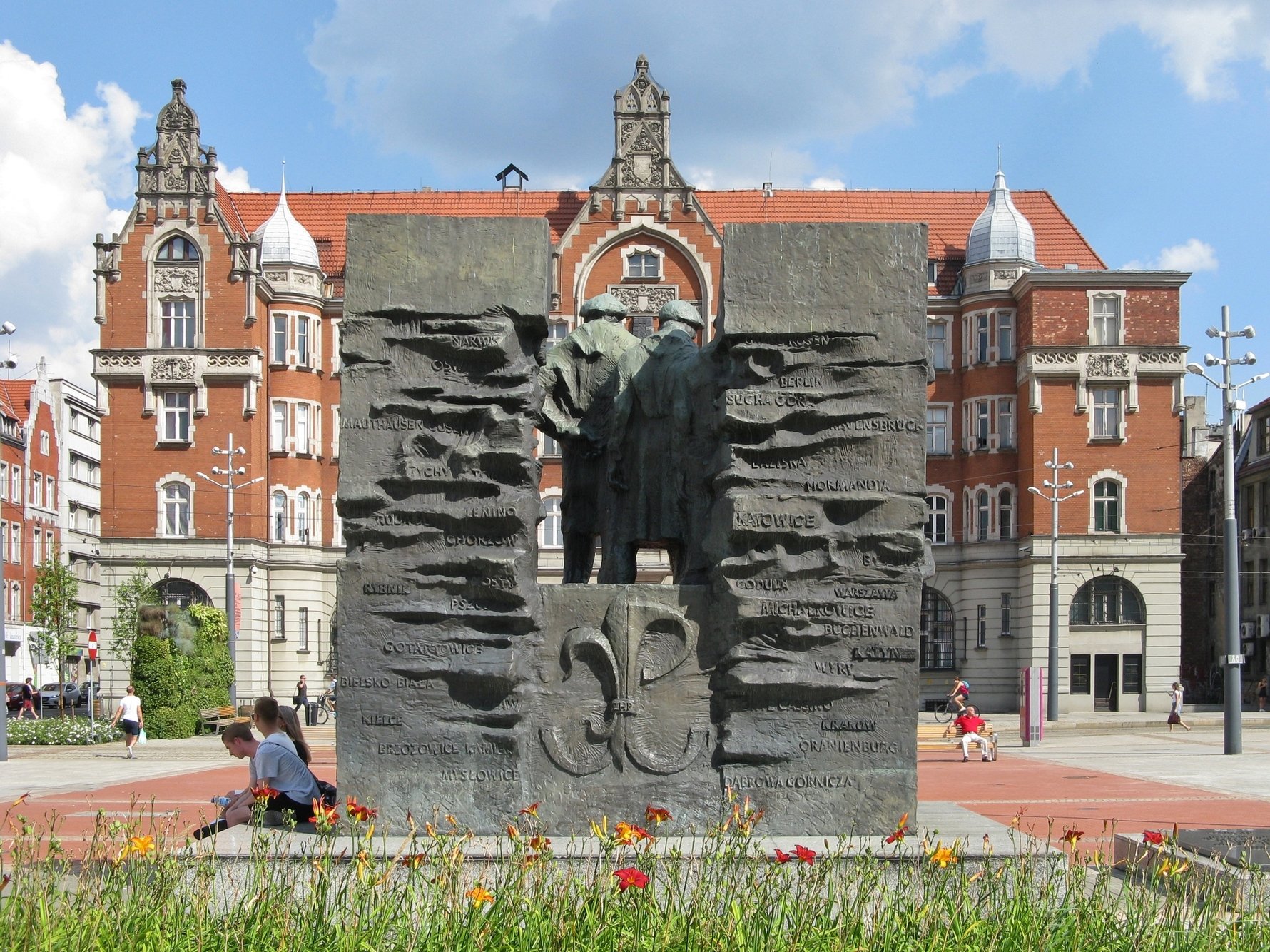
photo by Adrian Tync/Wikimedia Commons
A small commemorative plaque can also be found on the Silesian Insurgents' House on ul. Matejki, while a large memorial can be found far to the south in the cemetery on ul. Panewnicka in Ligota.
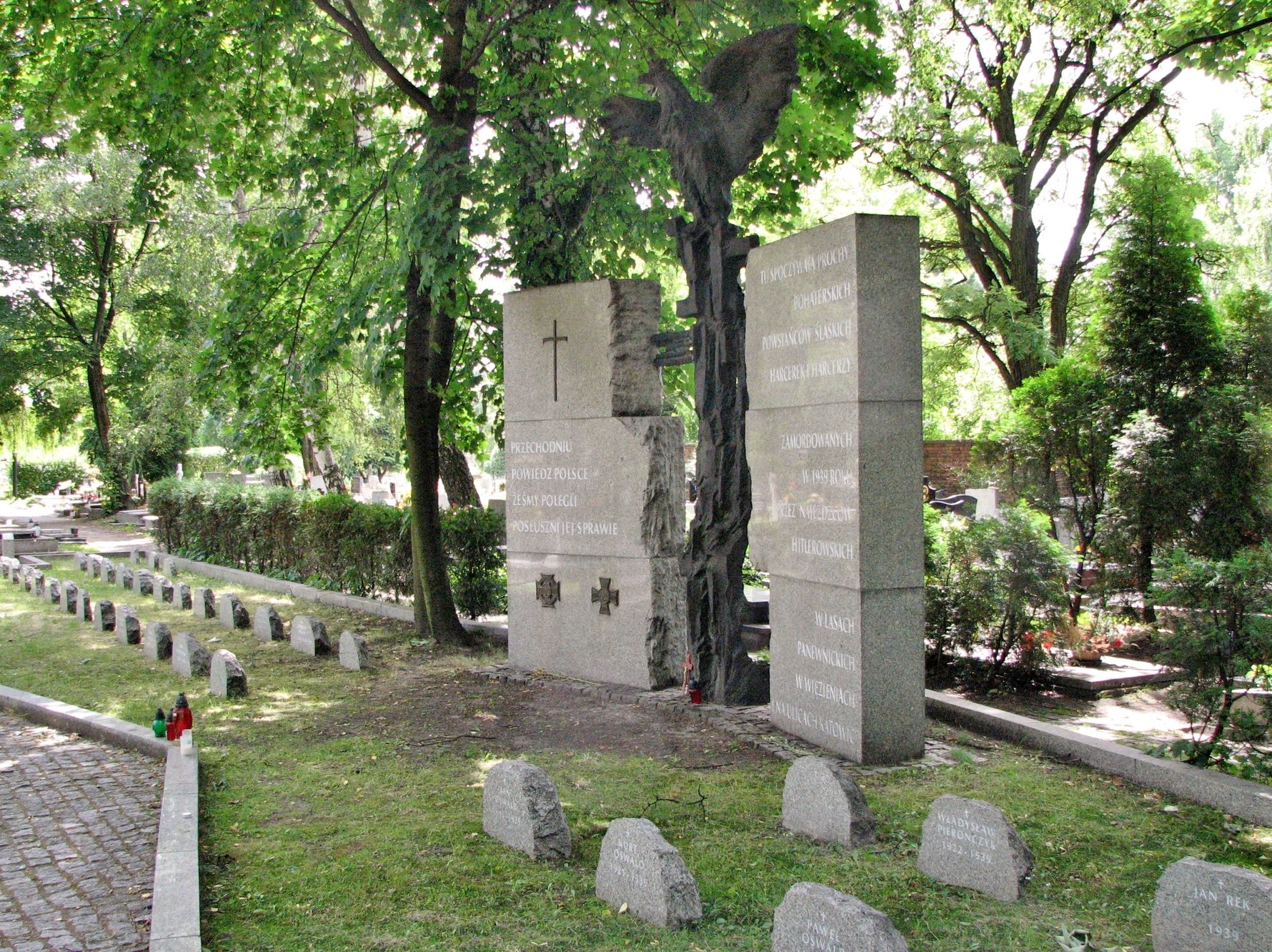
many of those honoured here were murdered in the nearby Panewnicka Forest.
Photo by Abraham OFM/Wikimedia Commons





Comments